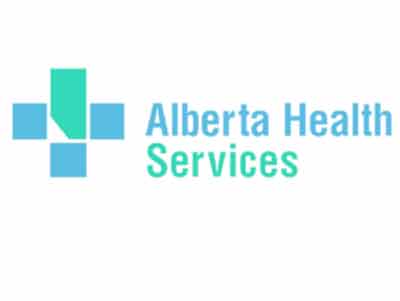- News Front Page
- Uncategorized
- Headline News
- Filipino Calgarian
- Business
- Pinoy Stories
- Community News
- Publisher's Note
- The Main Ingredient
- Views and Opinions
- Maikling Kwento
- Alberta News
- OFW – Month
- Travel News
- Health and Lifestyle
- Pinoy Toons
- Pinoy Spirit
- Entertainment
- The Philippine Lawyer
- Horoscope
- Greetings
- Editorial
- About Us
- Greetings From the Prime Minister
- Greetings from the President of the Philippines
- Greetings from the Premier of Alberta
- Greetings from the Mayor of Calgary
- Advertise With Us
- Disclaimer
- Subscription
Publisher's Note
- Publisher’s Note
 HAPPY NEW YEAR! HAPPY THREE KINGS!
As we are now in 2019, new year, new beginnings, new challenges and new opportunities. Everyone is entitled to make their new year’s resolution for as long as they keep it in mind and make sure that they do it to the best of their ability. When I was young [...]
HAPPY NEW YEAR! HAPPY THREE KINGS!
As we are now in 2019, new year, new beginnings, new challenges and new opportunities. Everyone is entitled to make their new year’s resolution for as long as they keep it in mind and make sure that they do it to the best of their ability. When I was young [...]
Visitors to Pinoytimes
Page added on February 24, 2011
FIBRE FACTS

What is dietary fibre?
Dietary fibre is the part of the plants we eat that we cannot fully digest. Fibre has many benefits; we need it for good health.
Why do we need fibre?
Fibre helps to:
- Keep your digestive system healthy and prevent constipation by making stools bulky and soft.
- Lower blood cholesterol and triglyceride levels.
- Lower your risk of colon cancer, heart disease, and digestive problems like diverticulosis (condition that occurs when small pouches(diverticula) push outward through weak spots in the colon).
- Improve blood sugar in people with diabetes.
- Control weight gain by making you feel full so that you eat less.
How much fibre do we need?
Female youth and adults, and children over 4 years of age should aim for at least 25 g of fibre per day 1. Male youth and adults should aim for at least 38 g of fibre per day1.
Most Canadians eat about half the recommended amount of fibre. However, this can be improved by eating more whole grains, legumes, vegetables, and fruit.
1Source: Dietary Reference Intakes for Energy, Carbohydrates, Fibre, Fat, Protein, and Amino Acids (Macronutrients), 2002.
Is all fibre the same?
No. There are two main types of fibre, water soluble and water insoluble. Most high fibre foods contain both types of fibre:
Soluble fibre is a soft fibre that dissolves in water. It helps to lower blood cholesterol and to control blood sugars. Best sources of water soluble fibre are oat bran, oatmeal, legumes such as dried peas, beans, and lentils, apples, strawberries, citrus fruits, and barley.
Insoluble fibre does not dissolve in water. It helps prevent constipation, keep the digestive system healthy, and lowers the risk of certain cancers. Best sources of water insoluble fibre are wheat bran, whole grain foods like whole wheat bread, vegetables, fruits, and legumes, such as dried peas, beans, and lentils.
Read food labels and look for the following nutrition claims:
- A very high source of fibre has at least 6 grams of fibre per serving.
- A high source of fibre has at least 4 grams of fibre per serving.
- A source of fibre has at least 2 grams of fibre per serving.
What are the high fibre foods?
Some foods that contain more than 6 grams of fibre per 1/2 cup (125 mL) serving:
|
|
Some foods that contain more than 4 grams of fibre per 1/2 cup (125 mL) serving:
|
|
Some foods that contain more than 2 grams of fibre per 1/2 cup (125 mL) serving:
|
|
Updated with CNF 2007 Source: Health Canada. Canadian Nutrient File 2007.
How to increase the fibre in your diet?
- Choose whole grain breads, cereals and crackers, whole wheat pasta, bulgur, quinoa and brown rice.
- Eat a high fibre cereal every day, either on its own or with another favourite cereal.
- Add bran or wheat germ to hamburger patties, coating mixes, casseroles, cookies, cereals, or eat a high fibre cereal every day, either on its own or mixed with another cereal.
- Replace half the flour in baking with whole wheat or oat flour.
- Add raisins, bananas, or strawberries to your cereal.
- Add fruit to muffins and cookies.
- Choose vegetables or fruit at every meal and snack. A Food Guide serving is 1/2 cup (125 mL) or one whole vegetable or fruit. Eat the skins or peels where appropriate.
- Use prunes or prune juice in small amounts. Prunes and prune juice contain a natural laxative. Don’t use them too often or in large amounts as they may cause a lazy bowel.
- Eat more legumes, such as cooked dried peas, beans, and lentils.
- Add kidney beans, chickpeas, and lentils to casseroles, salads, and spaghetti sauce.
- Use extra vegetables in casseroles, on pizza, or in salads. Add carrots, green peppers, broccoli, spinach, corn, or peas to your recipes.
- Enjoy stir-fried vegetables more often.
- Add 1 to 2 tbsp. (15-30 mL) ground flaxseed to cereal, applesauce, pudding, or in juice.
What are the guidelines for fibre supplements and laxatives?
- Concentrated fibre sources such as Metamucil or plain Prodiem are safe to use regularly. Start with a half or quarter dose and increase gradually. Drink lots of fluids.
- Commercial laxatives should not be used long-term. Some laxatives can damage the bowels.
- See your doctor if constipation is a big problem for you or if you notice a change in your usual bowel pattern.
Remember:
- Increase the fibre in your diet slowly. Eat fibre often to reduce gas and bloating.
- Drink at least six to eight cups (2 L) of fluid such as water, juice, milk, or soup each day. Fibre holds fluid, which keeps stools soft.
- Eat regular meals and snacks to keep food moving through your bowel.
- Establish a routine and allow enough time for bowel movements.
- Exercise – physical activity promotes regular bowel function.
Source: Health Link Alberta www.healthlinkalberta.ca
Speak to a registered nurse 24 hours a day, seven days a week by calling Health Link Alberta at 1-866-408-LINK (5465) toll-free. Mandarin Health Link Calgary 403-943-1554, Cantonese Health Link Calgary 403-943-1556.
If you want to read any of the previous ‘Road To Healthy Living’ series articles, please go to
http://www.calgaryhealthregion.ca/programs/diversity/multilingual_health_services.htm and get health information in your own language.
RELATED STORIES
LATEST HEADLINES
- Supporting Visible Minority Newcomer Women in Calgary
- Pinoy Times 10th Year Anniversary Celebration
- MOTION RECOGNIZING JUNE AS FILIPINO HERITAGE MONTH PASSES CANADA’S PARLIAMENT
- Manmeet Singh Bhullar Park officially opens in Calgary
- CORONATION OF MS. BARANGAY 2018 OF THE GOLDEN GENERATIONS SENIORS CLUB OF CALGARY
COMMUNITY NEWS
 NOTICE TO MEDIA
NOTICE TO MEDIA Message from the Mayor
Message from the Mayor Message from the Premier of Alberta
Message from the Premier of Alberta Message from the Prime Minister of Canada
Message from the Prime Minister of CanadaPINOY STORIES
 Hacking a Pinoy Christmas abroad
Hacking a Pinoy Christmas abroad- Holy Week practices in the Philippines
PINOY SPIRIT
HAVE YOUR SAY
Lorem ipsum dolor sit amet, consectetur adipiscing elit, dolor sit ipsum.PROMOTIONAL BLOCK
Lorem ipsum dolor sit amet, consectetur adipiscing elit, dolor sit ipsum.TRAVEL NEWS
PINOY TOONS
Tags
Archives














